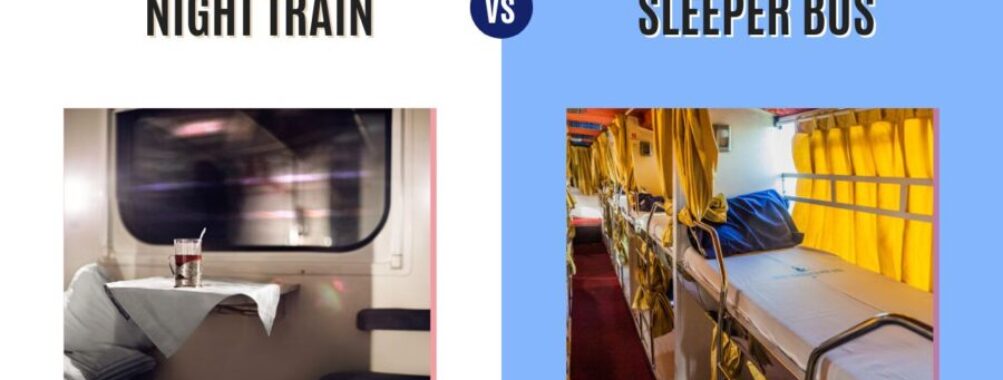
Night Train vs Sleeper Bus: 7 Key Differences Every Traveler Must Know
If you’ve ever stared at a map of Vietnam and wondered, “Night train or sleeper bus?”, you’re not alone. Both promise to whisk you across the country while you snooze, but honestly, they couldn’t be more different.
If comfort and stability matter most, the night train usually wins — but if saving money and reaching more destinations is your priority, the sleeper bus has the edge.
I’ve done both so many times I’ve lost count. I’ve rocked gently through the countryside in a four-berth train cabin and curled up in a narrow bus bunk somewhere between Da Nang and Hue.
Each has its quirks. The train’s steady rhythm can lull you to sleep, while a decent sleeper bus can feel surprisingly private if you score a good seat.
The catch? Not all services are equal. A well-reviewed bus company can feel like a tiny moving hotel, but a rough train carriage can test your patience.
Knowing what to expect—and how to dodge the common pitfalls—makes all the difference.
Key Takeaways
- Night trains offer smoother rides and more stability
- Sleeper buses reach more places and cost less
- Choosing the right operator is key to a good trip
Table of Contents
- Night Train vs Sleeper Bus: Core Differences
- Comfort and Sleeping Arrangements
- Facilities and Onboard Amenities
- Travel Routes and Accessibility
- Comfort and Sleep Quality
- Bed Types and Space
- Noise and Movement
- Privacy and Personal Space
- Safety and Security Considerations
- Luggage Handling and Theft Risks
- Road vs Rail Safety
- Traveling Solo or as a Group
- Booking Tickets and Costs
- How to Book Night Trains
- How to Book Sleeper Buses
- Price Comparison and Value
- Popular Routes and Destinations
- Vietnam’s Most Traveled Night Train Routes
- Top Sleeper Bus Journeys
- Regional Connectivity and Options
- Travel Experience and Local Insights
- Cultural Nuances and Etiquette
- Unexpected Challenges and Tips
- Personal Stories from Travelers
- Frequently Asked Questions
- What are the key comfort differences between night trains and sleeper buses for long-distance travel?
- How does the cost-effectiveness of traveling by night train compare to that of a sleeper bus?
- What safety considerations should one keep in mind when choosing between a night train and a sleeper bus?
- Book Your Dream Experience
- More Travel Guides
Night Train vs Sleeper Bus: Core Differences

Night trains and sleeper buses both let you travel while you sleep, but the vibe onboard is totally different. Your choice often comes down to how much you care about space, privacy, and the kind of travel story you want to tell later.
Comfort and Sleeping Arrangements
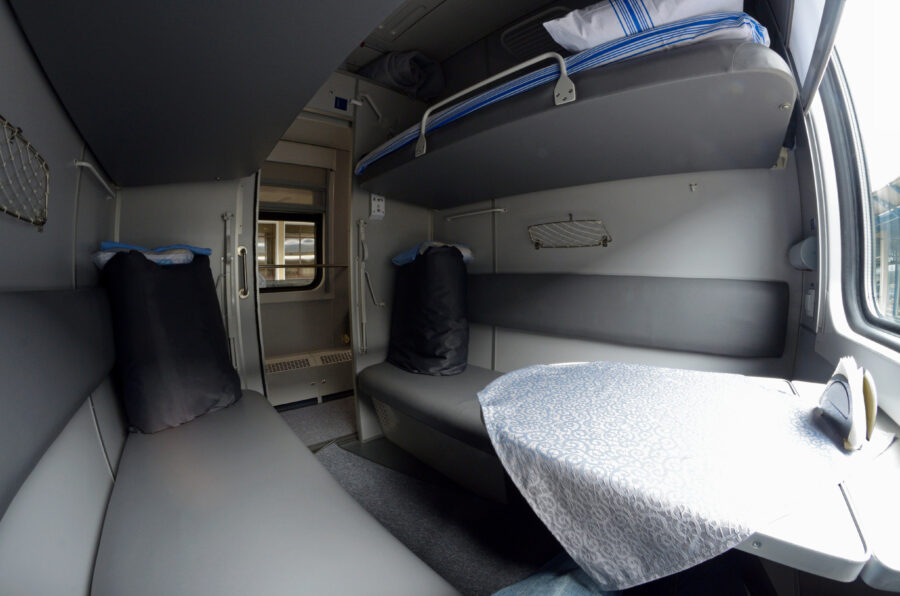
On a night train, you usually get a bunk in a shared cabin. The beds are flat, and in a soft-sleeper, you’ll have a mattress, pillow, and blanket.
You can stretch out—no need to curl your legs up. Trains sway gently, which some people find easier to sleep through than the constant bumps of a road.
Sleeper buses, though, have narrow reclining pods or bunks stacked in two or three rows. They’re fine if you’re not tall, but if you’re over 6 feet, you might have to sleep a bit bent.
The seats convert into almost-flat beds, but you’ll feel every turn and pothole. If you’re a light sleeper, the train’s steady rhythm might be kinder to you.
But if you can sleep anywhere and like the idea of hopping off right in the city center, a sleeper bus can be more direct.
Facilities and Onboard Amenities
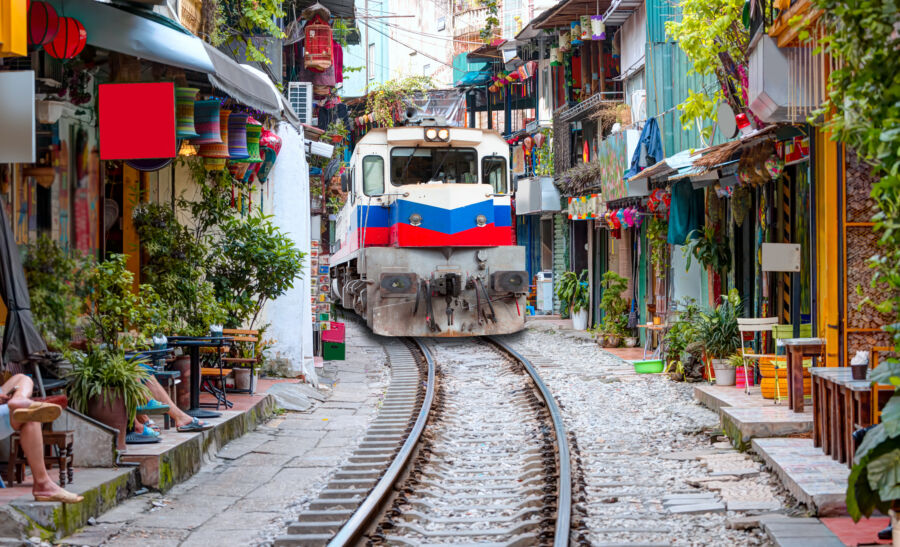
Most Vietnamese sleeper trains have toilets at the end of each carriage, basic washbasins, and sometimes a small dining car or snack service. You can walk around, stretch your legs, and even stand by the door to watch the scenery roll by.
That movement space really helps on longer rides. Sleeper buses are more compact—many have air conditioning, Wi-Fi, and sometimes onboard toilets, though these can be cramped.
You’ll usually get a blanket and maybe a bottle of water, but you can’t roam around much. One perk of buses is fewer strangers passing by your seat or bed.
On a train, people come and go in the corridor, which can disturb your rest. But the train gives you more room to keep your bag nearby and not crammed at your feet.
Travel Routes and Accessibility

Trains run on fixed rail lines, so you’re limited to cities along Vietnam’s main north-south route. That means they’re great for long hauls like Hanoi to Ho Chi Minh City, or Nha Trang to HCMC, but not for remote towns.
Sleeper buses reach more places, including smaller cities and tourist spots off the rail network. They also tend to have more departure times and can drop you closer to your accommodation, which cuts down on taxi rides.
Buses can be delayed by traffic or road conditions, while trains stick more closely to their schedule. If you want a direct overnight trip from Nha Trang to Ho Chi Minh City without needing to transfer, both options work, but the bus may get you there a bit faster door-to-door.
Comfort and Sleep Quality
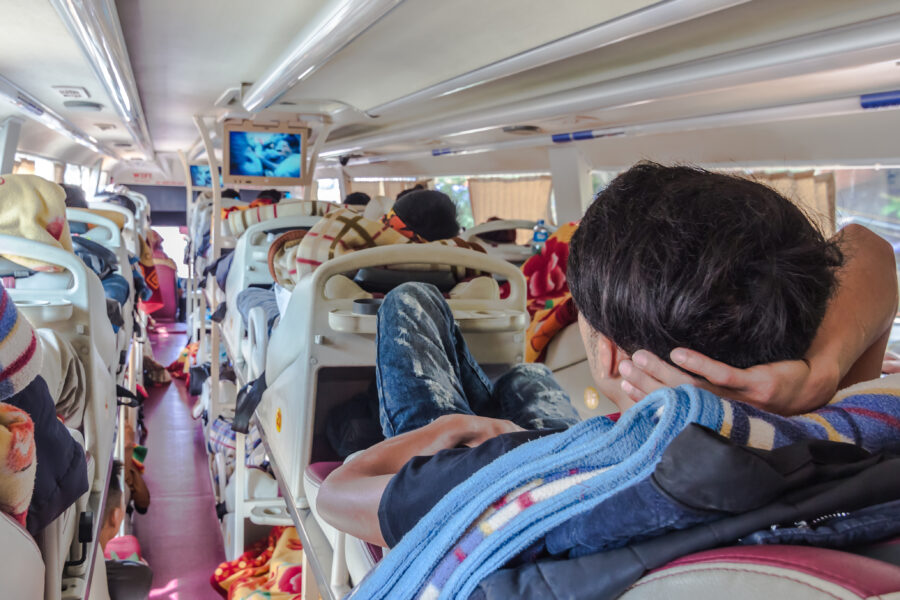
When you’re deciding between a night train and a sleeper bus, the little details can make or break your rest. The size of your bed, the way the vehicle moves, and how much personal space you get—all of it shapes how you’ll feel in the morning.
Bed Types and Space
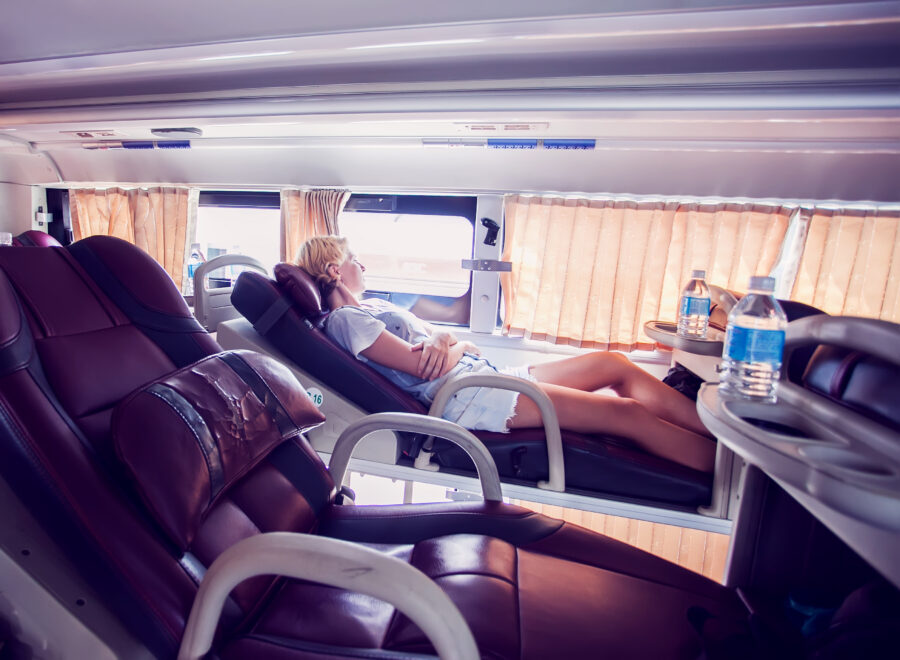
On most European night trains, you can book a sleeper compartment with a proper mattress, sheets, and sometimes even a duvet. Depending on your budget, you might get a single, double, or triple setup, with the beds folding away into seats during the day.
Some, like the Nightjet deluxe rooms, even have private showers. Sleeper buses are a different story—you usually get a narrow bunk or reclining pod, sometimes stacked in two levels.
The padding varies wildly—some are soft enough for a nap, others feel like a gym mat. If you’re tall, trains tend to win here. The bunks are usually longer, and you can stretch out without hitting a wall or curtain.
On buses, the space can feel cramped, especially if you can’t fully extend your legs.
Noise and Movement
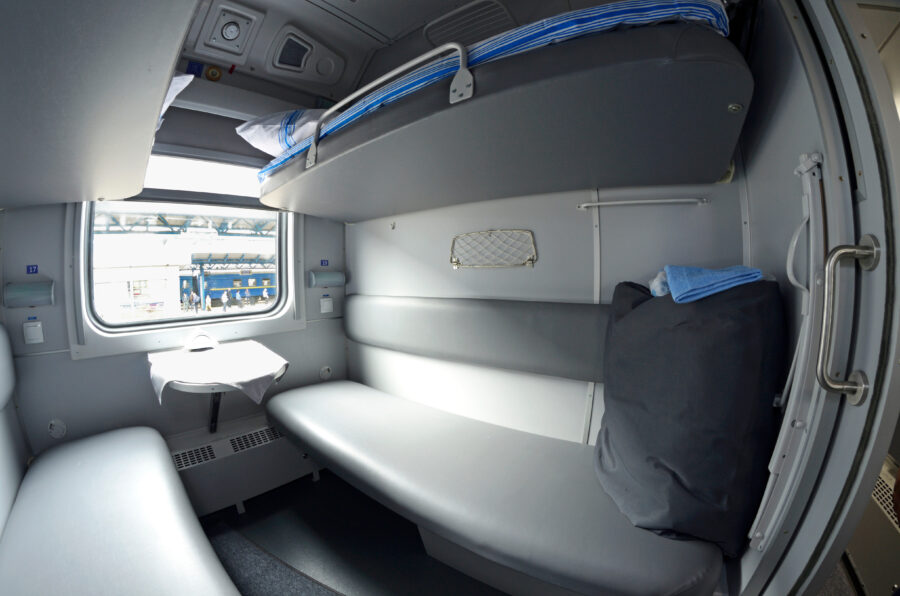
Trains have a steady rhythm—more of a click-clack glide—that many people find soothing after a while. But older carriages can rattle, and you might hear doors sliding or muffled voices in the corridor.
Buses are quieter in terms of voices, but road noise is constant. You’ll feel every lane change, speed bump, and pothole. If the route includes winding roads, you might sway enough to wake you up.
If you’re sensitive to noise, pack earplugs. I’ve slept fine on a train near the wheels but struggled on a bus when the driver braked hard every few minutes.
Privacy and Personal Space

On a night train, you can book a private compartment or share with one or two others of the same gender. Curtains, doors, and sometimes even deadbolts give you a sense of security.
You can change clothes, read, or just lie there without feeling on display. Sleeper buses usually have curtains for each bunk, but you’re still in a shared, open-plan space.
People climbing in and out of their pods can jostle you, and the aisle is often narrow. If you value true privacy, a train compartment—especially one you book just for yourself—feels more like a small hotel room than public transport.
On a bus, you’ll likely trade some privacy for a lower fare and more routes.
See Related: Irresistibly Useful Vacation Tips to Transform Your Next Trip
Safety and Security Considerations
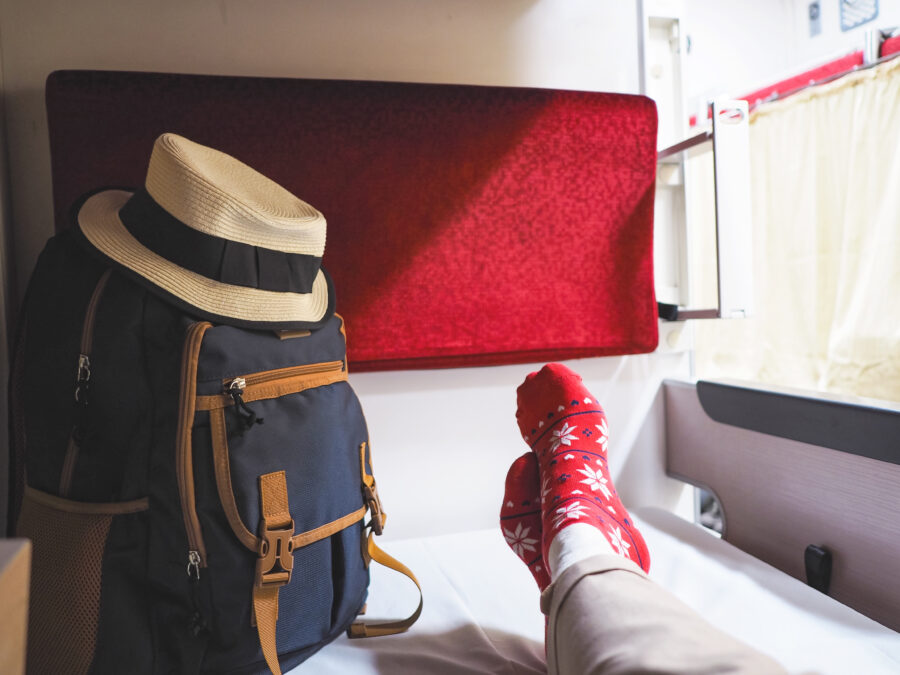
When you’re choosing between a night train and a sleeper bus, your safety and peace of mind matter as much as comfort or price. Luggage handling, the risks on the road versus the rails, and whether you’re traveling alone or with others all play into how secure you’ll feel.
Luggage Handling and Theft Risks
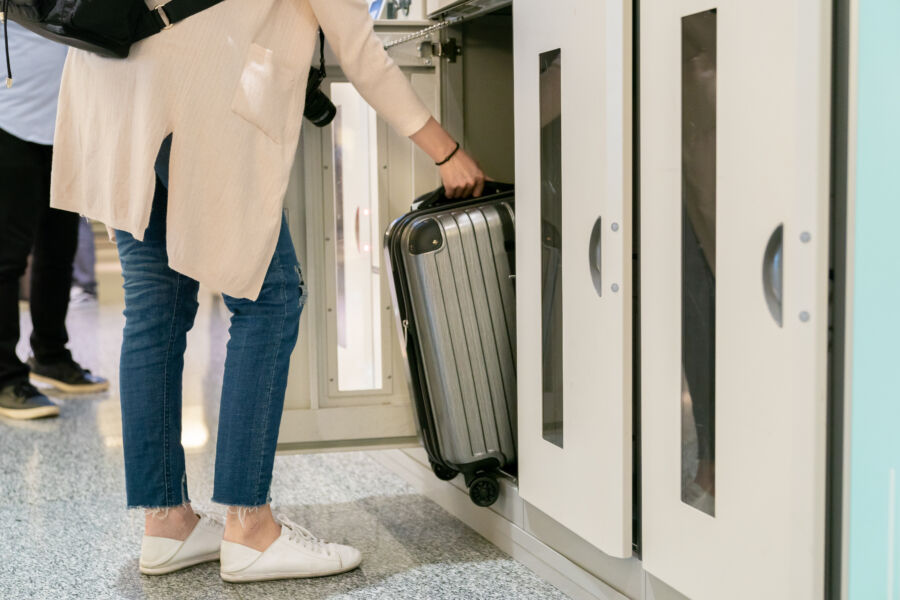
On night trains, you often have more space to store bags near your seat or in a sleeper compartment. But theft can still happen, especially if you leave valuables unattended in shared cars.
I’ve learned to keep my small bag with essentials right next to me, even when I’m sleeping. Sleeper buses usually have luggage stored underneath in external compartments, so you won’t see your bag until arrival, which can be a bit nerve-wracking.
If you’re carrying important items, keep them in a small backpack in the cabin. Using a small lock or cable tie on zippers is a good habit.
If you’re stopping in a city mid-trip, consider using short-term luggage storage so you’re not dragging everything around before boarding. Compact, secure travel gear helps keep things safe.
Road vs Rail Safety
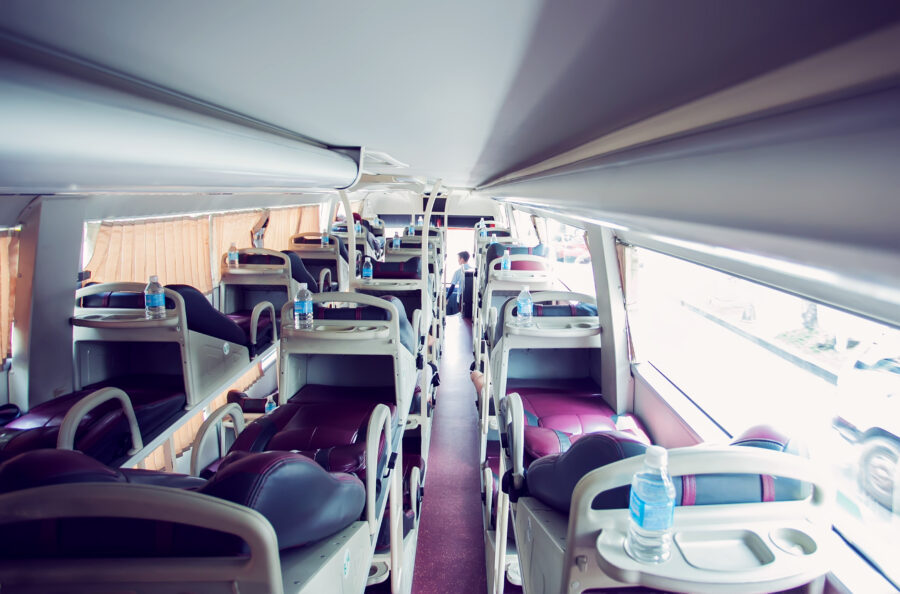
Trains generally avoid the hazards of road traffic, so accidents are rare compared to buses. Night trains benefit from dedicated tracks and professional crew monitoring operations.
That said, incidents can still happen, so it’s worth knowing the emergency exits and procedures on board. Sleeper buses, on the other hand, share the road with everything from trucks to motorbikes.
In some regions, road conditions and driver fatigue can be bigger safety concerns. I’ve been on buses where the driver switched mid-route, which was reassuring, but not all companies do this.
If you choose a sleeper bus, pick a reputable operator with well-maintained vehicles and clear safety protocols. And don’t be shy about checking seatbelts—some buses have them, some don’t.
Traveling Solo or as a Group
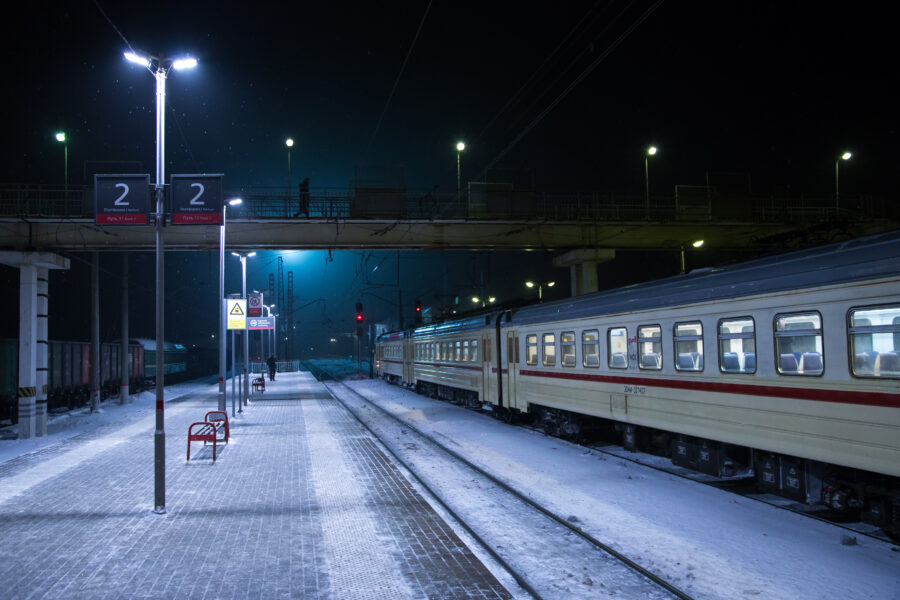
When you’re traveling solo, both options have pros and cons. On a night train, you might feel safer in a sleeper compartment with a lockable door.
On a bus, you’re in a more confined space with strangers, which can be either comforting or uncomfortable depending on the vibe. In a group, you can watch each other’s belongings and share the responsibility of staying alert.
I’ve found that chatting with fellow passengers, even briefly, creates a friendlier atmosphere—and that can deter unwanted attention. Solo travelers should also keep friends or family updated on their journey.
A quick message when you board and when you arrive goes a long way toward peace of mind. And if something feels off, trust your gut and move seats or speak to staff right away.
Booking Tickets and Costs
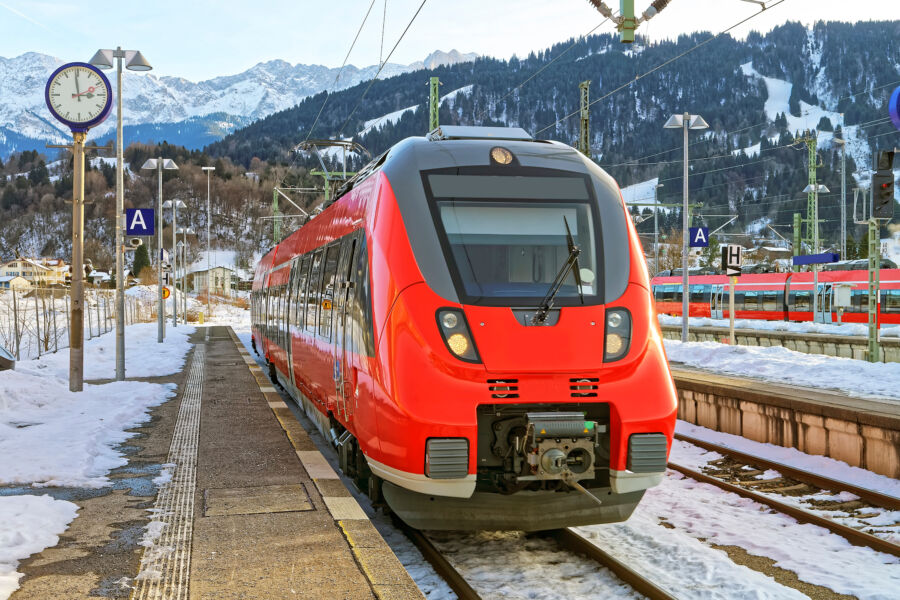
Getting a spot on a night train or sleeper bus isn’t just about showing up at the station. Availability swings a lot depending on the season, and prices can change based on class, comfort level, and how far ahead you book.
Planning usually means better seats, smoother travel, and sometimes a nicer night’s sleep.
How to Book Night Trains

For popular routes, especially in Thailand and Vietnam, night train tickets can sell out days or even weeks in advance. This is especially true during holidays like Songkran or Tet.
You can buy tickets at the train station, but that’s risky if you’re on a tight schedule. Online booking through reliable travel platforms lets you compare classes—second-class sleepers, first-class compartments, or even seated tickets if you’re on a budget.
When you book online, you can often choose your exact berth. Lower bunks are more spacious, but they go first. If you’re traveling in a group, private cabins are worth the splurge.
And don’t forget—some stations are far from the city center, so factor in the time and cost of getting there.
How to Book Sleeper Buses
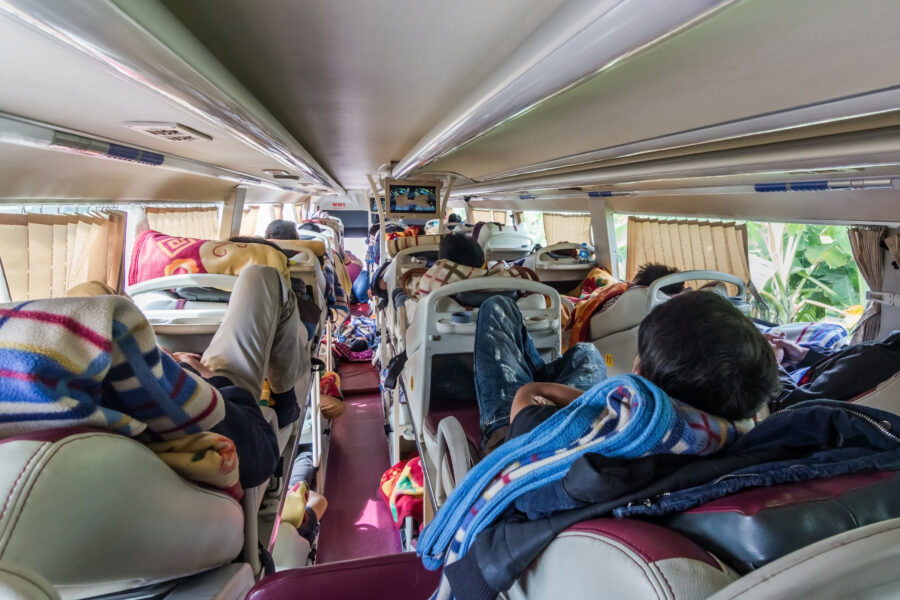
Sleeper buses? Honestly, you can book them last-minute without much drama since tons of operators run the same routes. In cities like Bangkok, just stroll into a travel agency or the bus terminal and grab a ticket for that night.
But if you’re picky about seats—like those elusive lower bunks or a front-row spot for your legs—booking online makes life easier. Most companies let you reserve and pay ahead now, so you don’t have to mess around with wads of cash at the counter.
During peak tourist season, don’t risk it—snag your ticket early. Buses rarely sell out as fast as trains, but the good seats disappear first.
Keep in mind, departure points can be all over the place. Some leave from central tourist hubs, others from massive, out-of-the-way terminals.
Price Comparison and Value
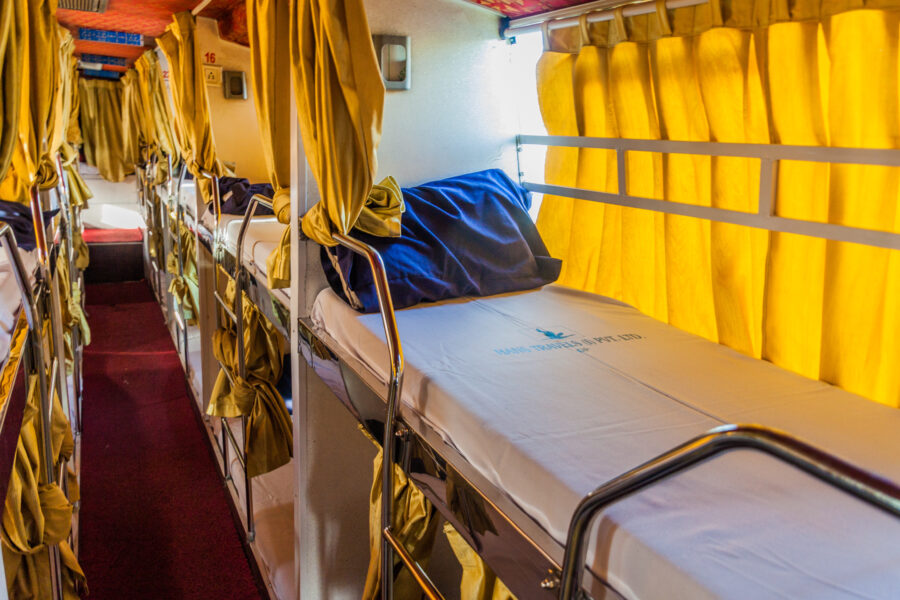
Generally, sleeper buses will save you more baht than night trains. Standard buses can dip down to 400 THB, while trains usually kick off around 800 THB for a basic sleeper bed.
VIP buses try to close that gap with wider seats and extras, but they’re still usually friendlier to your wallet.
Here’s a quick breakdown:
| Option | Price Range (THB) | Duration | Comfort Level |
|---|---|---|---|
| Sleeper Train | 800–1,500 | 12–14 hours | High (beds) |
| Sleeper Bus | 400–1,200 | 9–12 hours | Moderate–High |
If you’re after comfort and don’t mind paying extra, go for the train. Watching your budget or booking last-minute? The bus is probably the better value.
Feeling spontaneous? Sometimes you can score last-minute deals on cheap travel options if you’re flexible about your plans.
Popular Routes and Destinations

Some night trains and sleeper buses aren’t just rides—they’re half the adventure. The best ones blend comfort, killer scenery, and schedules that make sense, so you don’t waste precious daytime stuck in transit.
Vietnam’s Most Traveled Night Train Routes
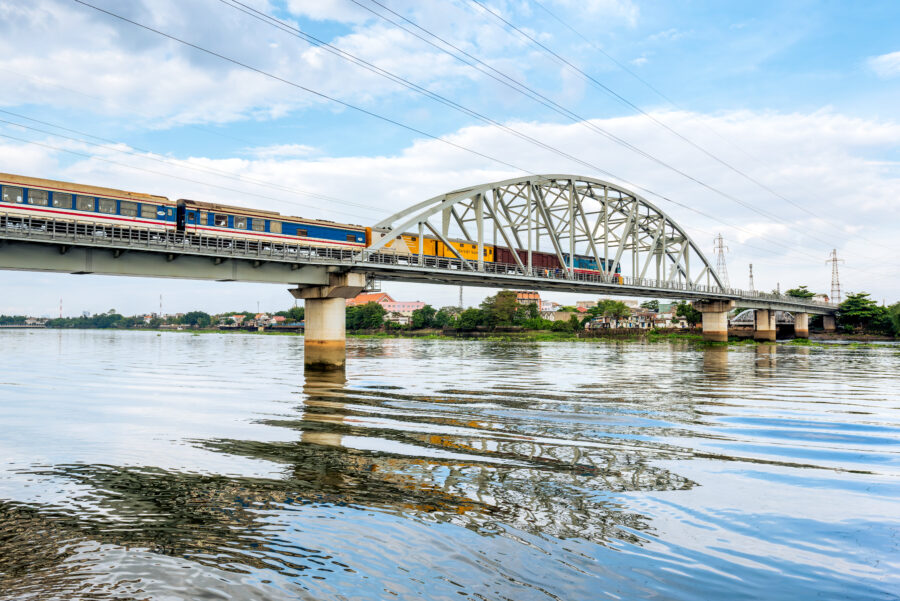
If you’ve hung around Vietnam at all, you’ve heard of the Reunification Express. It’s not a single train but a web of routes running the length.
The stretch from Hanoi to Da Nang shines—think coastal views, mountain passes, and a ride smooth enough to actually get some shut-eye.
Another crowd-pleaser: Nha Trang to Ho Chi Minh City. It’s an 8–9 hour overnight, a solid alternative to flying. Sleeper coaches are basic but decent, with soft berths and AC.
For the long-haul folks, Hanoi to Ho Chi Minh City clocks in at about 30–35 hours. I’d break it up—hop off in Hue or Nha Trang, then roll on south when you’re ready.
Tip: Bring your snacks and water. The dining car? It could be a win, could be a total flop.
Top Sleeper Bus Journeys
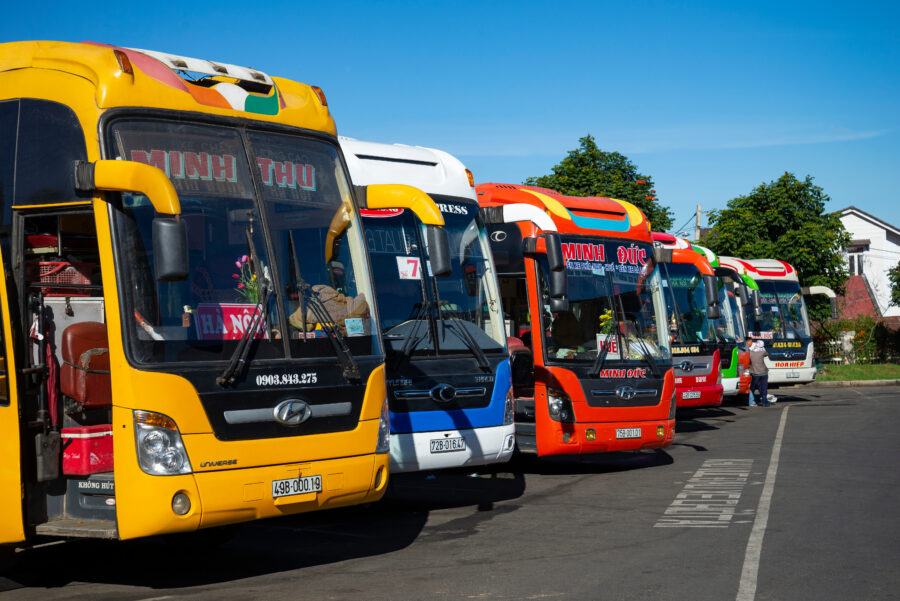
Sleeper buses in Vietnam? That’s a whole vibe. You get semi-reclined seats, almost like narrow bunk beds stacked in rows.
They’re not fancy, but they’re cheap and surprisingly efficient for city-hopping overnight.
The Ho Chi Minh City to Da Lat route is a classic. It’s a 6–7 hour climb into the cool mountain air—you’ll wake up surrounded by pine trees, not honking scooters.
Another busy line: Hoi An (via Da Nang) to Nha Trang. Buses leave late, roll in early, and you get a full day ahead.
Traveling during holidays? Book early. Buses fill up, sometimes faster than trains. And don’t forget earplugs—you’ll thank me later.
Regional Connectivity and Options

Night trains and sleeper buses aren’t just a Vietnam thing. All across Southeast Asia, you can link up routes into Thailand, Cambodia, and Laos.
For example, hop a train from Hanoi to Lao Cai for Sapa, then catch a bus to northern Laos. The connections aren’t always seamless, but that’s half the fun, right?
In Europe, sleeper trains connect cities like Paris, Berlin, and Rome. They’re pricier than buses, but for long hauls, they’re way more comfortable.
If you’re mixing up rail, bus, and flights, keep an eye out for cheap tickets to fill in those big gaps. Save the overnight rides for the routes that deliver—scenery, timing, or just the right kind of travel magic.
See Related: The Most Undiscovered Places in the World: Exploring Hidden Gems Off the Beaten Path
Travel Experience and Local Insights
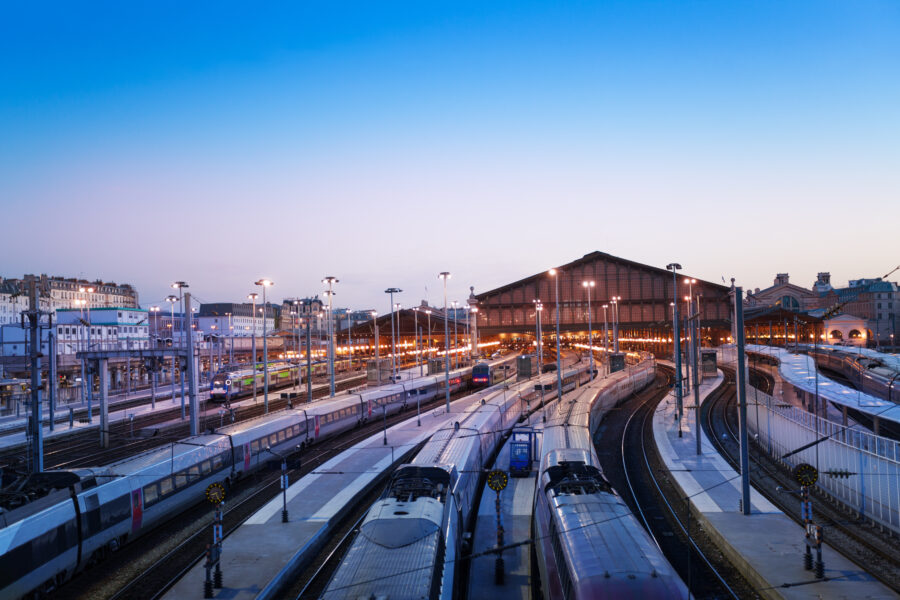
Choosing between a night train and a sleeper bus isn’t just about saving money or stretching out. It’s about meeting locals, rolling with the weird little surprises, and maybe even collecting a story or two you’ll tell for years.
Cultural Nuances and Etiquette
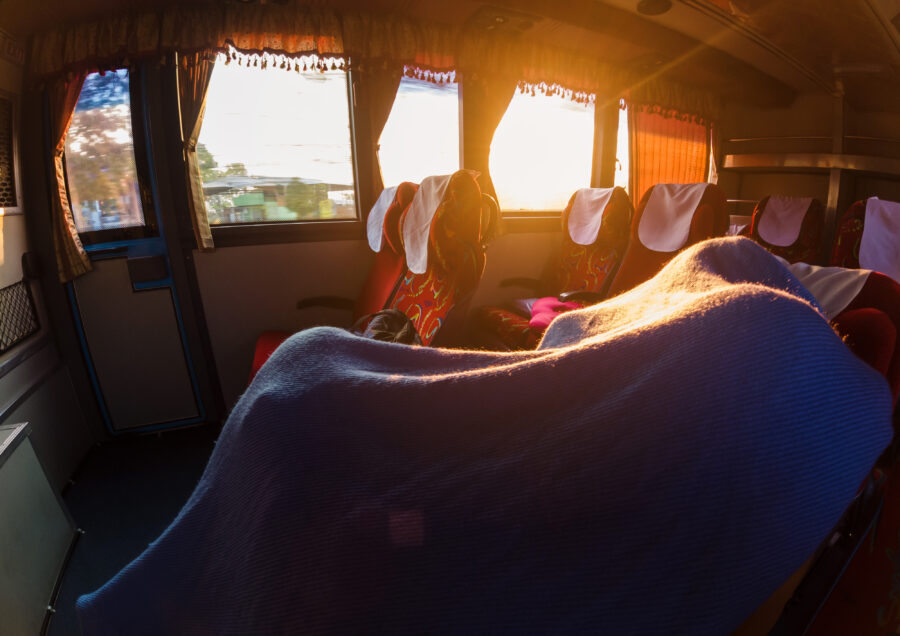
On a night train, you’ll probably share a cabin with strangers. In Vietnam, it’s good manners to greet your cabin mates and keep things quiet after lights go out.
Locals sometimes share snacks or tea—accept a little if you’re offered. It’s just friendly.
Sleeper buses? Less chatting, but there are still unspoken rules. Shoes off before climbing into your bunk, and don’t let your stuff spill over into someone else’s space.
Traveling during a holiday? Expect more families, more noise, and maybe a festive vibe. Locals sometimes turn the ride into a rolling picnic, so don’t be shocked if you catch a whiff of noodles or grilled meat in the air.
Want to dive deeper? You can always line up local-led activities or tours and day trips ahead of time to make the most of your stop.
Unexpected Challenges and Tips
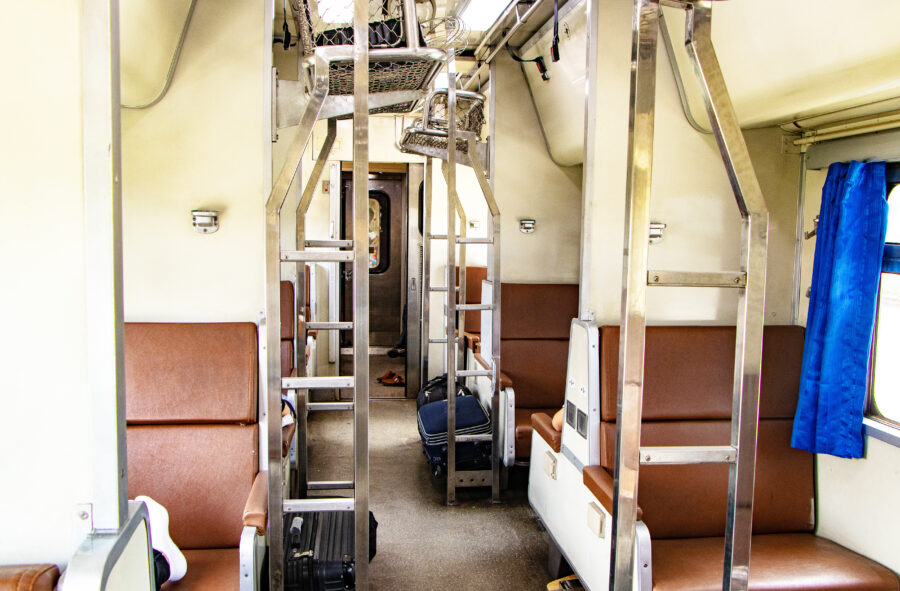
Night trains can show up late—or, weirdly, early. Sometimes you’ll roll into town before sunrise and have to kill time until the city wakes up.
Sleeper buses might drop you on the edge of town, so you’ll need to figure out a ride into the center. Not always ideal, but hey, it’s part of the adventure.
Bring layers. Bus AC can turn you into a popsicle, while train cabins sometimes get stuffy. Earplugs are non-negotiable—bus horns and train clatter never really sleep.
Keep your valuables close. Petty theft isn’t rampant, but it happens. Motion sickness? Buses on winding roads can do a number, so pack meds just in case.
Booking local attractions ahead can help you make the most of your time if you get in earlier (or later) than expected.
Personal Stories from Travelers
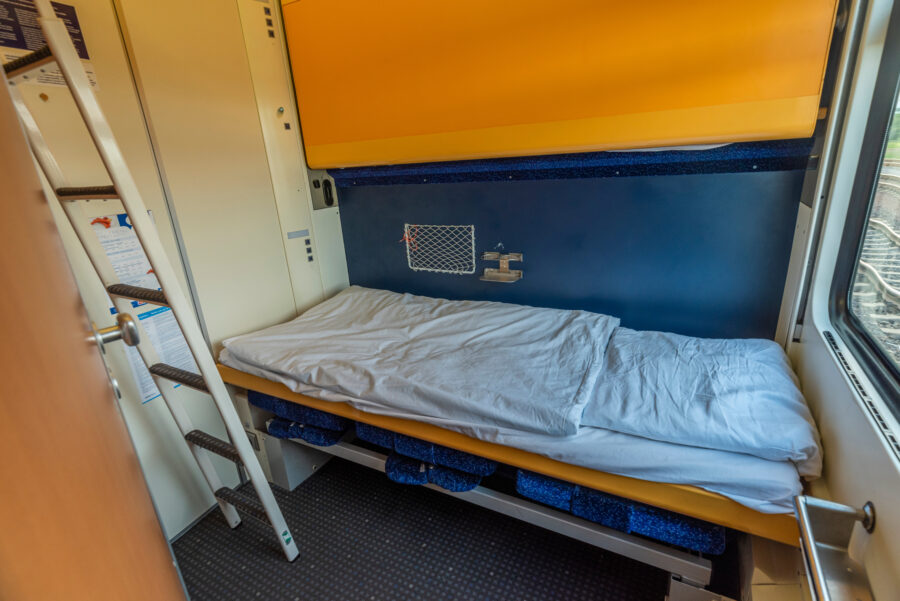
I once found myself on a sleeper bus in Laos, sharing a double mattress with a total stranger. We ended up swapping stories all night—awkward at first, but honestly, it’s the kind of thing you remember.
Another time, a train attendant in Vietnam insisted I try his homemade rice wine. I took a polite sip, and suddenly the whole cabin was laughing and passing around snacks.
Friends have told me about being woken on Thai trains two hours before arrival so the crew could fold up the beds. One swears by bottom bunks for extra space, another can’t forget the sunrise rolling into Hanoi.
It’s these little moments—good, bad, or just plain weird—that stick with you long after the journey’s over.
See Related: The Top Vacation Spot in the World: Discover the Ultimate Destination
Frequently Asked Questions
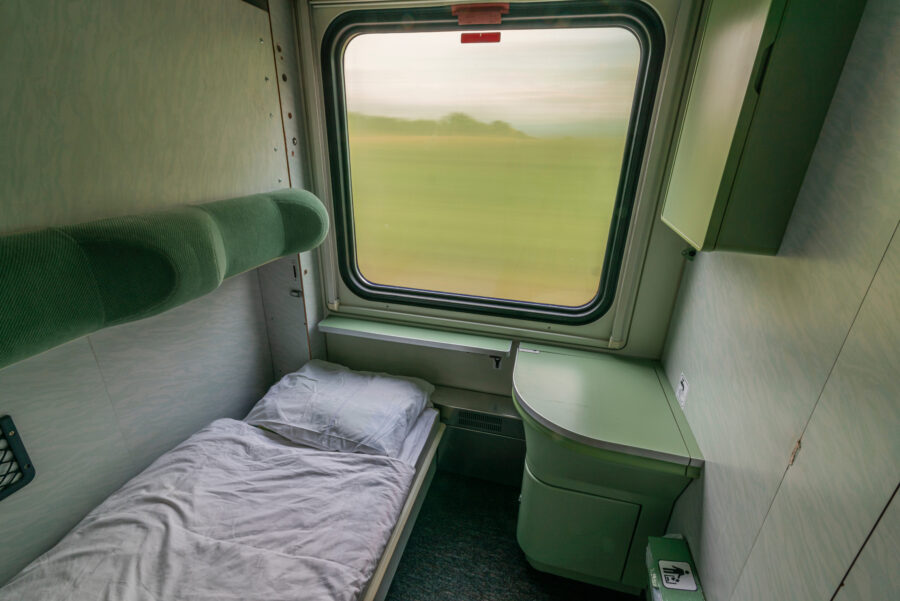
Night trains and sleeper buses both let you skip a hotel and wake up somewhere new, but wow, the experience can be wildly different. Comfort, price, and safety all hinge on the route, the company, and how you prep before you board.
What are the key comfort differences between night trains and sleeper buses for long-distance travel?
On a night train, you’ve got more room to move. Even sharing a cabin, you can stand, stretch, or wander to the dining car.
The ride usually feels smoother—no sudden swerves or hard brakes like you’ll get on twisty roads.
Sleeper buses can be cozy if you pick a solid operator with private pods, curtains, and clean bedding. But as this guide on night travel says, quality swings a lot.
Some buses make tons of stops, blast lights on, or pick up more passengers in the middle of the night. If you’re a light sleeper, the gentle train rocking might suit you better.
But if you’re into snug personal pods and direct routes, a good sleeper bus can be surprisingly nice.
How does the cost-effectiveness of traveling by night train compare to that of a sleeper bus?
Sleeper buses tend to be cheaper, especially on short or regional hops. You’ll save more if you’re cool with a standard berth instead of a private pod.
Still, the cheapest bus isn’t always the best deal if you end up tossing and turning all night.
Night trains cost more, especially if you want a private or four-berth cabin. But you’re buying stability, space, and fewer interruptions.
On some routes—like Nha Trang to Ho Chi Minh City—the price gap isn’t huge, so the train’s comfort might be worth the splurge.
If you’re counting every penny, compare official sites or trusted agents for both. And steer clear of sketchy third-party sellers who won’t tell you what you’re booking.
What safety considerations should one keep in mind when choosing between a night train and a sleeper bus?
On both buses and trains, keep valuables close. Seriously, don’t stash your stuff in overhead bins or those shared compartments—temptation makes thieves, and all that.
Theft isn’t super common, but it does happen. Usually, it’s just because someone got distracted for a second.
If you’re taking a bus, check whether the seatbelts work. I always try to grab a seat that’s farther from the entrance—it’s quieter, and honestly, it feels a bit safer since fewer people walk by.
On trains, middle carriages are usually the sweet spot. Less shaking, less foot traffic, and you’re not right by the doors.
If something feels off—a sketchy driver, weird noises, or maybe just a gut feeling—don’t be shy about hopping off at the next stop. As LunaTrain’s FAQ points out, picking a reputable company is probably the best thing you can do for peace of mind.



